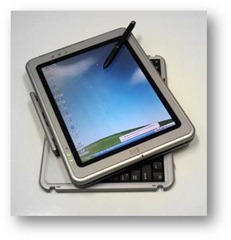Tip o' the Week #105 - Productivity? Learn to type!
Thinking about general productivity often leads one down the path of some methodology to get things done, or some great tools to try and silence the background noise. I've certainly featured plenty of both as Tips o' the Week, but one thing we've never covered is simply making correct use of the keys in front of you. Some factoids to amuse your family and bemuse your friends:
- TYPEWRITER is the longest word that can be made using the letters only on one row of the keyboard.
- The Quick Brown Fox Jumps Over the Lazy Dog is a pangram, in other words a phrase that contains every letter of the alphabet (in English, at least) . It's often used by typists to try out a new keyboard, and has been used for a long time by typesetters to show off their fonts. It's not the most efficient (there is a bit of repetition) , but it is one of the most sensible in meaning. Well, sort-of.
- Quick wafting zephyrs vex bold Jim might be shorter, but it sounds like it came from a random word generator, or is the source of some fiendish anagram.
- It might sound geeky, but "Just My Type" is a fascinating book all about fonts, if you have any spare book tokens or Amazon vouchers after Christmas. No, really. It's Quite Interesting.
- The average person's left hand does 56% of the typing.
- Stewardesses is the longest word typed with only the left hand and lollipop with your right.
 It's been a long-held dream of many computer scientists, that people should be able to interact with their machines without using a keyboard. Remember Star Trek's Scotty and the Macintosh?
It's been a long-held dream of many computer scientists, that people should be able to interact with their machines without using a keyboard. Remember Star Trek's Scotty and the Macintosh?
Bill Gates championed Microsoft Research to spend years and years looking into handwriting, speech and gesture recognition - some of which was very ahead of its time (the Tablet PC predating the iPad by 8 years, for example - though history shows being first isn't always best). Microsoft's Surface platform developed and delivered multi-touch interfaces before the iPhone made the idea mainstream.
Only now has the technology become cheap, fast and advanced enough to make reliable speech recognition available, but it's mostly being done on devices like phones (or Kinect sesnros), with cloud services providing the recognition & intelligence. See a comparison of Microsoft's TellMe (in Windows Phone) with Apple's Siri (iOS 5) - here. A less favourable comparison, here.
Oh, well.
Even with all the advances in touch and handwriting or speech, we still predominantly enter information into our PCs using the keyboard. And many of us might be embarrassed to still be at the "hunt & peck" method of typing, at best a finger or two of each hand meandering over the keyboard to pick out the right key, whilst looking at the keyboard.
Touch typing revolves around the raised ridges on the "F" and "J" keys, which form the root of the "home keys" - the idea being that you can use 3 or 4 fingers of each hand to type whilst being able to watch the screen and not the keyboard. A decent (nonprofessional) typist should be able to manage 40-50 words per minute (wpm) , while the very best touch typists could be 120 wpm or better. Your average web surfer is probably 20-30wpm.
To find out your own WPM and error rate, check here.
The www.powertyping.com site has a number of practice exercises too.
There are a good number of ways to improve your typing - from seeking out the venerable Mavis Beacon software to teach the user, to online (free!) "Online Keyboarding" lessons.
You never know, sharpening up your typing skills could help you get a better work/life balance by being a few percent more effective at doing something we all do, every day!
Comments
- Anonymous
October 23, 2014
The computer keyboard will probably be with us for many years to come – it’s just such an efficient way
